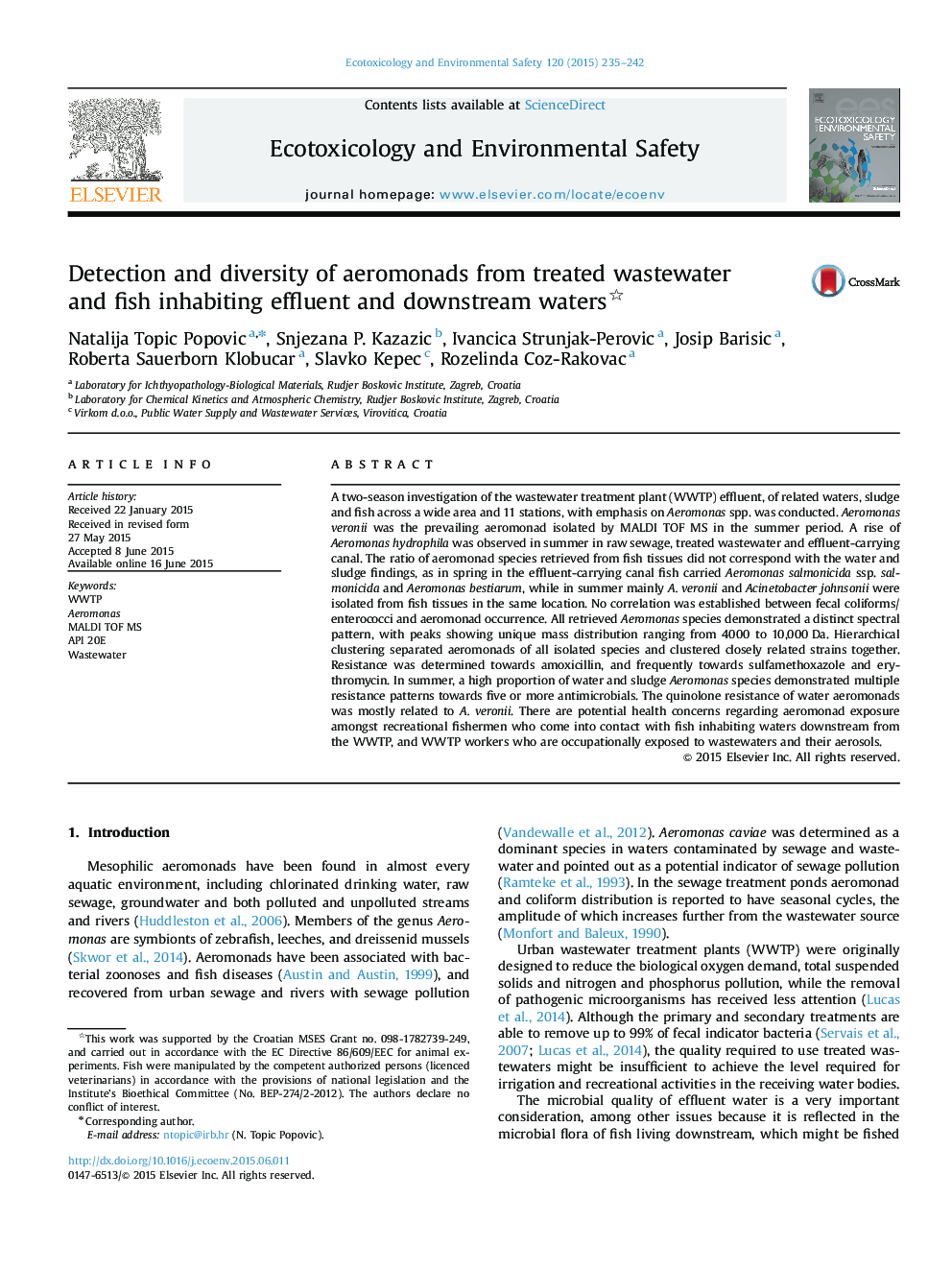| Article ID | Journal | Published Year | Pages | File Type |
|---|---|---|---|---|
| 4419418 | Ecotoxicology and Environmental Safety | 2015 | 8 Pages |
•The ratio of aeromonads amongst other bacteria identified by MALDI-TOF MS and API 20E was comparable•A. veronii was the prevailing aeromonad isolated by MALDI TOF MS.•Aeromonad species from fish tissues did not correspond with aeromonads from water and sludge•A high proportion of water and sludge aeromonads demonstrated multiple resistance patterns•Zoonotic aeromonads raise potential health concerns
A two-season investigation of the wastewater treatment plant (WWTP) effluent, of related waters, sludge and fish across a wide area and 11 stations, with emphasis on Aeromonas spp. was conducted. Aeromonas veronii was the prevailing aeromonad isolated by MALDI TOF MS in the summer period. A rise of Aeromonas hydrophila was observed in summer in raw sewage, treated wastewater and effluent-carrying canal. The ratio of aeromonad species retrieved from fish tissues did not correspond with the water and sludge findings, as in spring in the effluent-carrying canal fish carried Aeromonas salmonicida ssp. salmonicida and Aeromonas bestiarum, while in summer mainly A. veronii and Acinetobacter johnsonii were isolated from fish tissues in the same location. No correlation was established between fecal coliforms/enterococci and aeromonad occurrence. All retrieved Aeromonas species demonstrated a distinct spectral pattern, with peaks showing unique mass distribution ranging from 4000 to 10,000 Da. Hierarchical clustering separated aeromonads of all isolated species and clustered closely related strains together. Resistance was determined towards amoxicillin, and frequently towards sulfamethoxazole and erythromycin. In summer, a high proportion of water and sludge Aeromonas species demonstrated multiple resistance patterns towards five or more antimicrobials. The quinolone resistance of water aeromonads was mostly related to A. veronii. There are potential health concerns regarding aeromonad exposure amongst recreational fishermen who come into contact with fish inhabiting waters downstream from the WWTP, and WWTP workers who are occupationally exposed to wastewaters and their aerosols.
